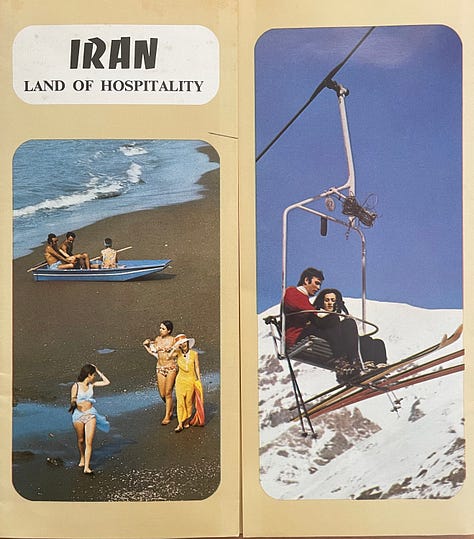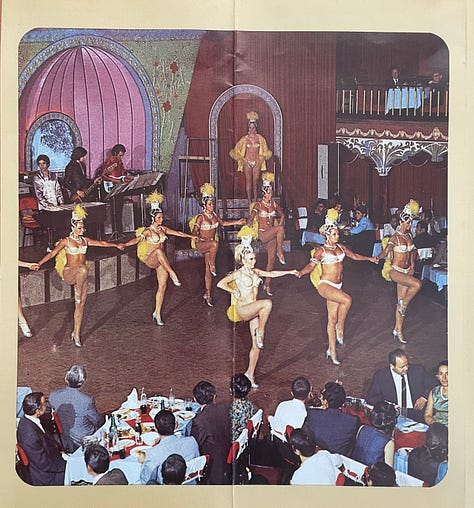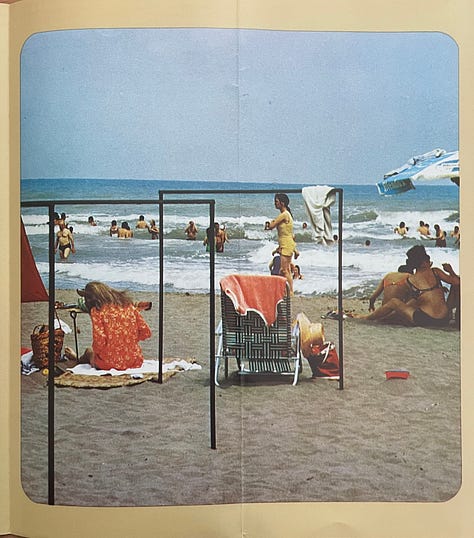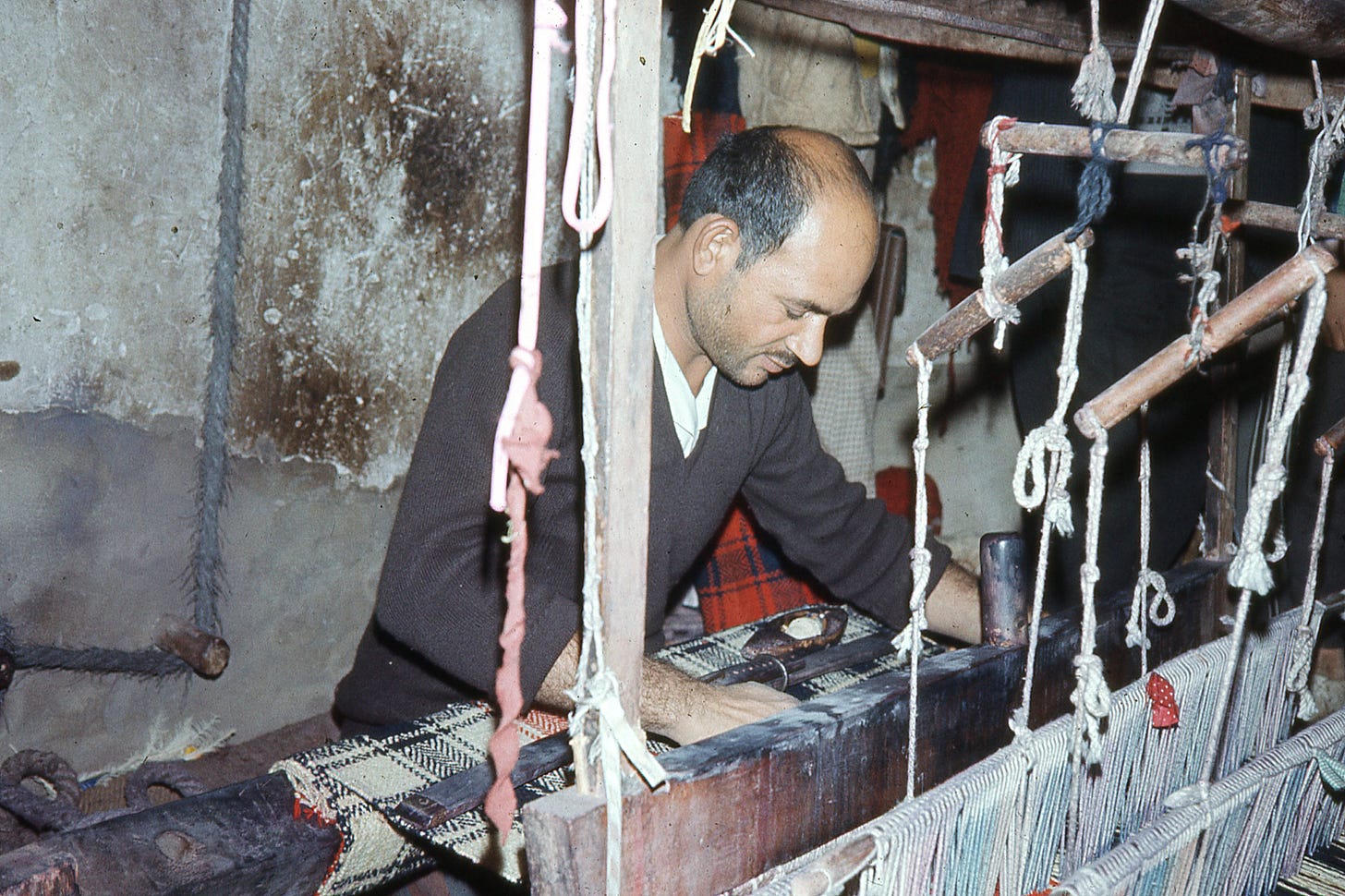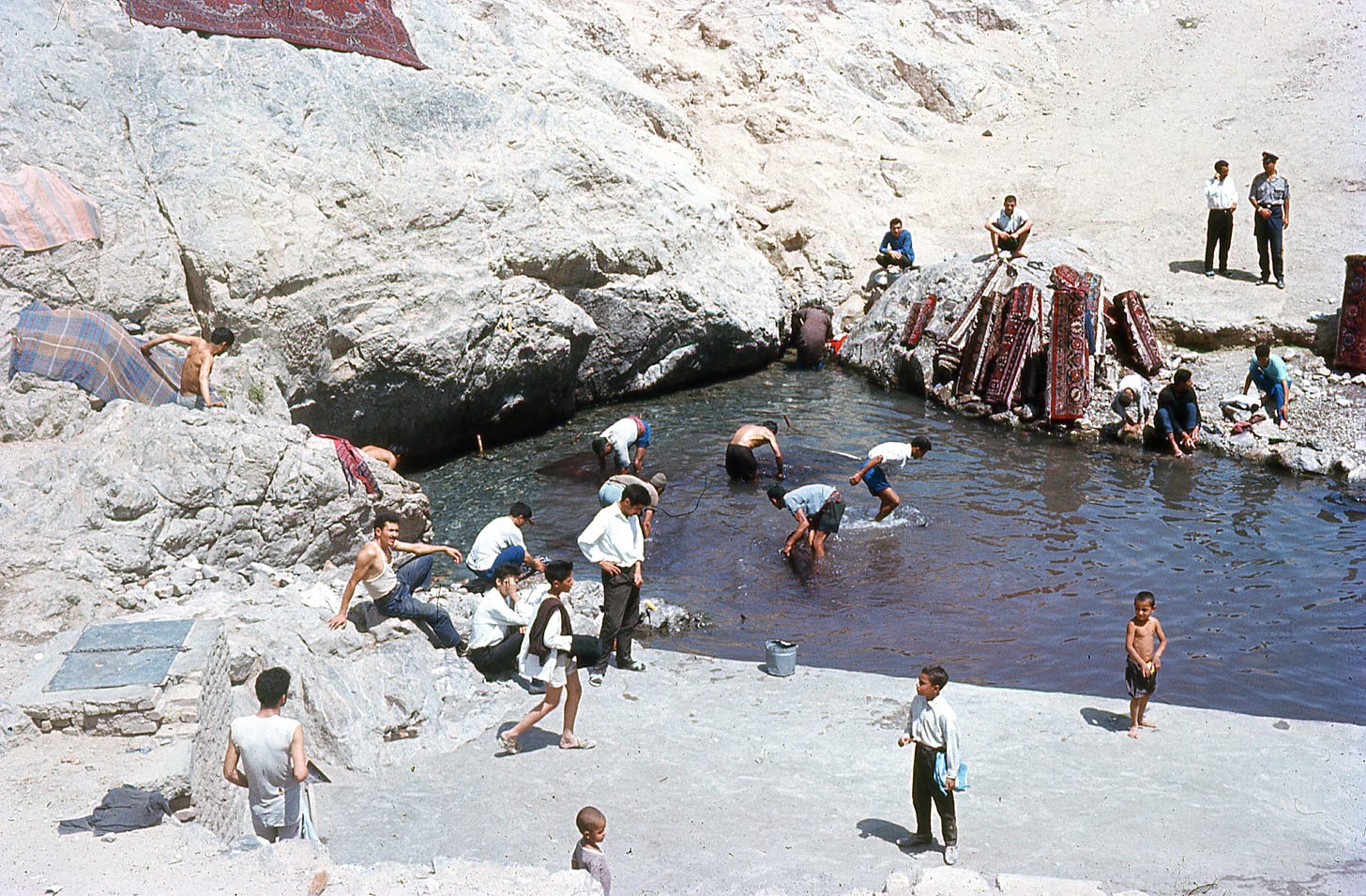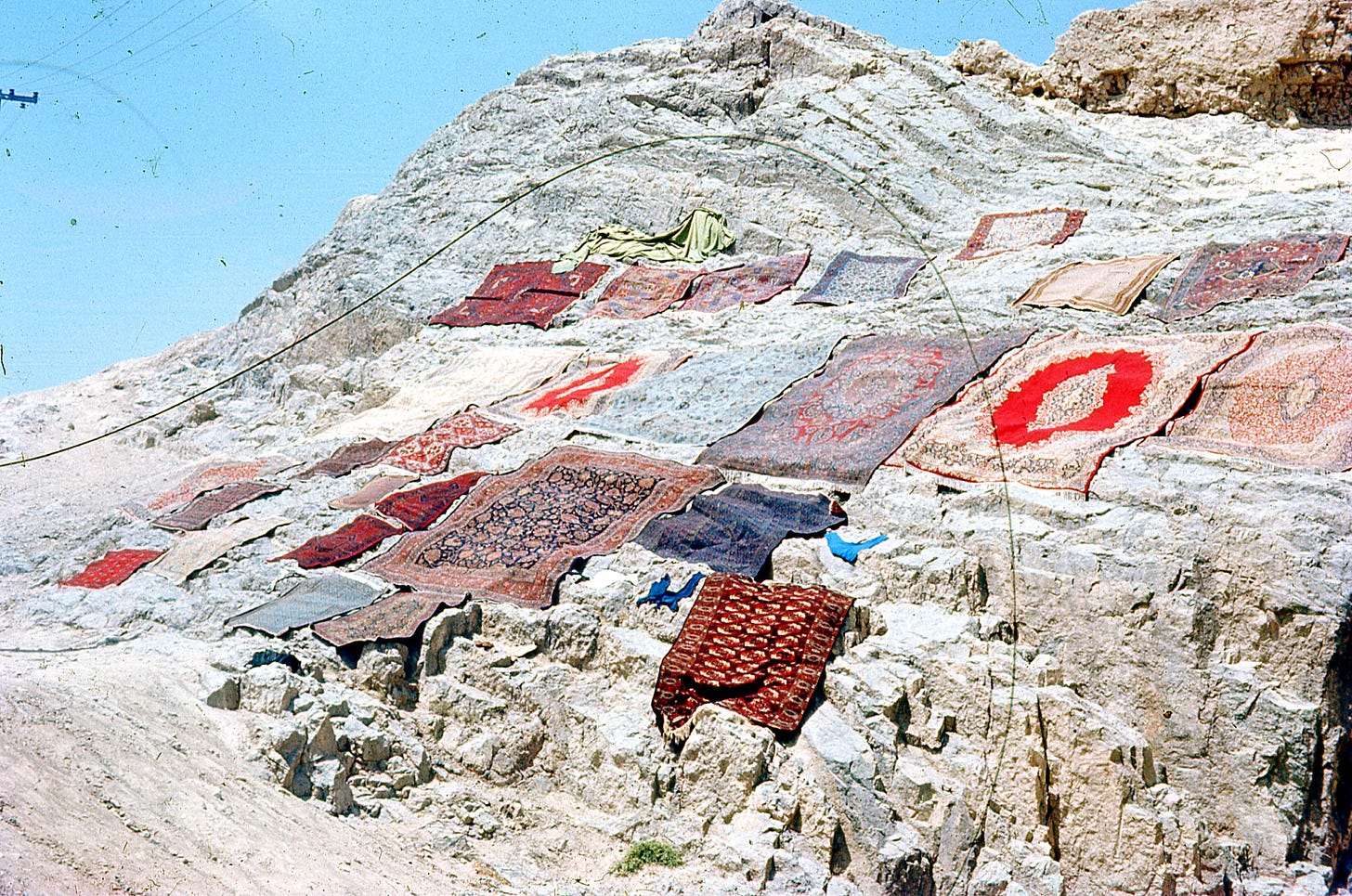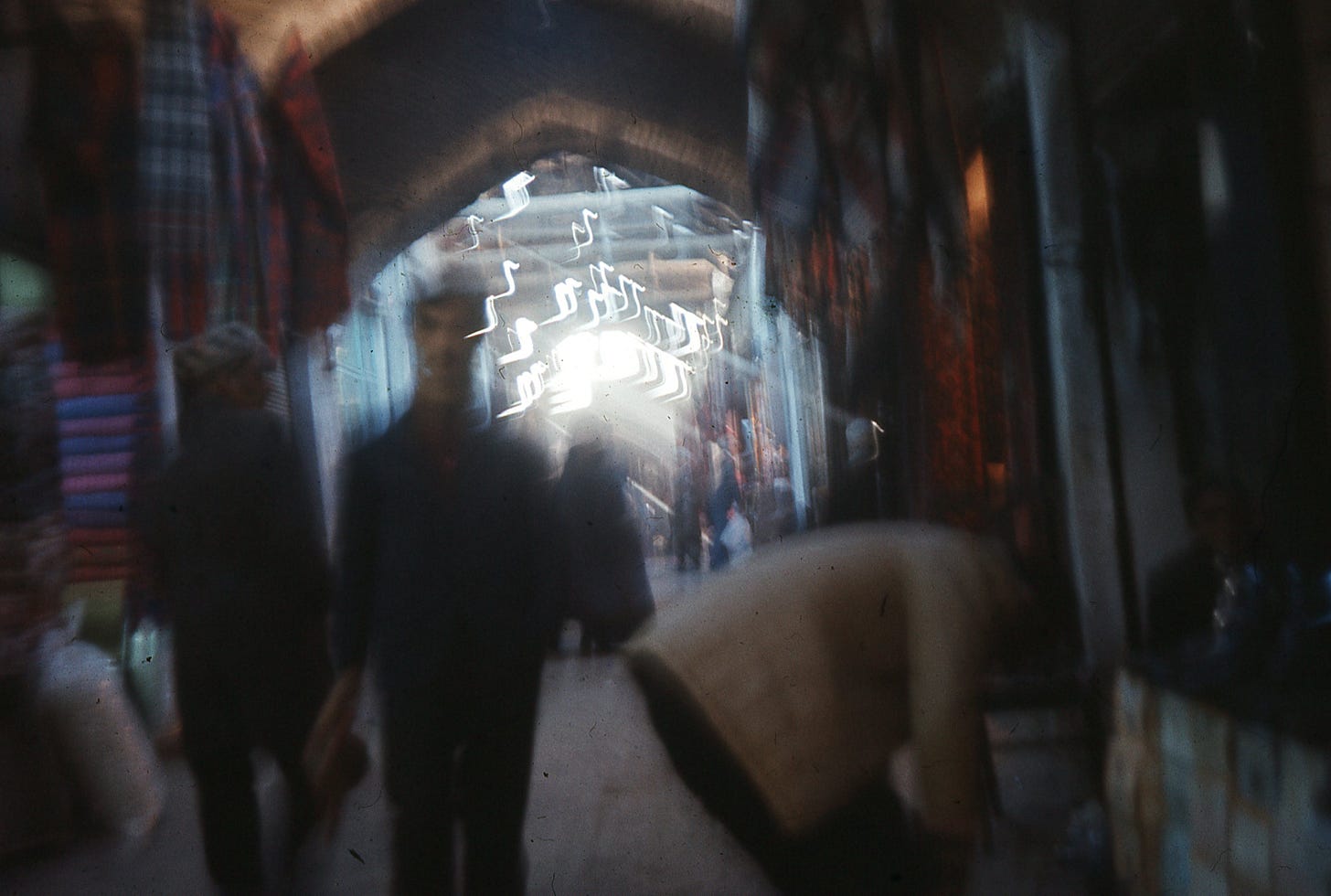As part of K’s orientation after arriving in Tehran, she participated in a number of visits and tours.
August, 1967
We went to the mosque. We were able to go into the library—but not able to look at the real old, valuable books that are kept in a safe—because we were Christian and not able to look at them. We visited a museum—small, but priceless. One can hardly think of such exquisite work, etc. etc. being done by hand. Next we saw how the inlay (used for covering boxes, etc.) is done. Fine sticks are smoothed—and colored—fastened together in a design. Imagine fastening a bunch of colored toothpicks in a design—then they are sliced off in very thin pieces and applied and polished. Because of the colors a design results.
Next we saw the hand weaving of silks, brocades, etc. Two work together—the weaver, and one above to separate the warp threads, which he does with his feet! The resulting material is beautiful but very expensive.
Here’s one of K’s photos showing a weaver at work.
We saw rug washing—quite a ways out of the city—remember Mrs. Geiger’s picture of it? This is what is done when one sends a “rug to the cleaners.”
She took several pictures of the rug washing.
The last stop was at the bazaar. Blocks and blocks of shops—under a roof. Our group kept together. One could easily get lost—both in the place and in the dealing. Such a mixture of interesting things—much trash—some things very beautiful.
There will be many more bazaars to come, but here’s one image I found in K’s files. Not technically a great picture, but I love how it captures the mysterious spirit of the place.
In the afternoon I scrubbed the floor of my bedroom—the furniture etc. What I have with me is now put away.
In late afternoon Julie, Phyllis (a 19 year old) and I went to the Iranian craft shop, run by the Ministry of Economics. All are made by Iranians.
I found a booklet and brochure from this craft shop in K’s files.
You can see my days are busy.
August, 1967—special feature
Several of K’s letters also describe her participation in a project called the Culture Assimilator that has a very interesting back story.
Yesterday we took a bus trip as part of the “cultural assimulator” course.
This morning is our Cultural Assimulator course—I believe we are to work with Iranians. I believe the problem is to see if studies of culture and/or geography help prepare people to work with another culture. Half of us have worked with learning things about the culture, the other half about geography.
We’ve had a course in Cultural Assimulation—some of it was quite interesting—done with program learning. It is part of someone’s doctorate from the U. of Illinois.
The Culture Assimilator is an approach to cross-cultural training that uses a self-administered programmed training manual to help members of one culture to interact and adjust successfully with members of another culture. In one of life’s strange coincidences, my husband was a graduate student at the University of Illinois and worked with Dr. Harry Triandis, one of the professors who led this research. Here’s a technical report on the larger project, which included the work in Iran.
I also found a report on the actual study in which Katharine was a participant, which was apparently conducted by Martin M. Chemers.
I hope you’ve enjoyed this installment of K’s travels. The adventures in Tehran will continue next week. In the meantime, I thought I’d help you visualize how different the Iran of nearly 60 years ago was from the Iran of today with the help of this tourist brochure from K’s files.
